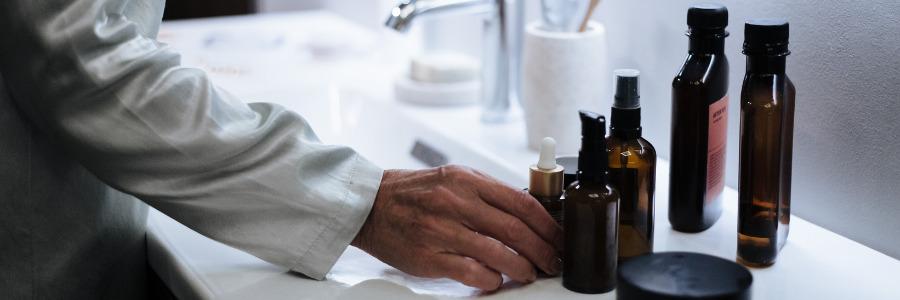Health Canada Cosmetic Notification Process – What You Need to Know
By: Deeksha Chahal, JUNIOR REGULATORY AFFAIRS ASSOCIATE, email
Expanding your cosmetic business into the Canadian market can be an exciting venture, but it also comes with regulatory responsibilities. To ensure the safety of consumers and compliance with Canadian laws, cosmetic products must go through the cosmetic notification process. This blog will guide you through the essential procedures and requirements required to complete the cosmetic notification process in Canada.
Before delving into the Cosmetic Notification process, it’s crucial to understand the basic concepts of cosmetics in Canada.
Definition of Cosmetics
In Canada, cosmetics are defined as products used for cleansing, beautifying, promoting attractiveness, or altering skin complexion or the appearance of the body. This includes a wide range of products such as makeup (lipstick, eyebrow pencil), skincare (moisturizer, toner) and haircare (shampoo, hairspray). Depending on the formulation, Canadian cosmetic regulations also include deodorants and perfumes.
Sometimes, what you think is a cosmetic product must actually be registered as a Natural Health Product. This happens when you make a therapeutic claim about a particular ingredient, for example essential oils. This can even be true for multiple products in the same product line. If products use the same ingredients but make different claims, they may require different types of registration with Health Canada.
Canadian Cosmetic Regulatory Bodies
Health Canada and ECCC (Environment and Climate Change Canada) are responsible for regulating cosmetics in the country. Primary Canadian cosmetic regulations are outlined in the Food and Drugs Act and Cosmetic Regulations.
Canadian cosmetic regulations apply to all products that meet the definition and will be sold in Canada to consumers – from multinational corporations to home based businesses.
Now let’s begin with a general overview of the cosmetic notification process in Canada. Unlike pharmaceuticals, cosmetics do not require pre-market approval but must be notified to Health Canada before 10days of its first sale in the Canadian market. The notification process is designed to make sure that cosmetics are safe for use and properly labeled. Cosmetic products do not require pre-market approval; however, you are required to notify Health Canada by submitting a cosmetic notification form shortly before your product hits store shelves or online retailers, including Amazon.
The cosmetic notification form requires some standard information, for example the product name and contact information for your business. But the requirements get more complex, too. Health Canada oversees the regulation of cosmetics to ensure that they meet the necessary safety standards by evaluating number of concepts like INCI, Hotlist, DSL/NDSL/SNACs review, VOC Calculation, and Microbeads.
INCI
It stands for International Nomenclature of Cosmetic Ingredients. The INCI name is a standardized naming system used globally to identify cosmetic ingredients. For example, if a product contains a substance Water, then the INCI name that should be used for it on cosmetic form and on product label is “Aqua”.
The Cosmetic Hotlist
The Cosmetic Hotlist is a critical component of the cosmetic notification process in Canada. It is a list of substances that are prohibited or restricted for use in cosmetics due to their potential health risks. The Hotlist is regularly updated to reflect emerging scientific evidence and changing safety standards.
ECCC (Environment and Climate Change Canada) Review
DSL/NDSL/SNAC’s Review
The DSL stands for Domestic Substance List, is a key factor in the Cosmetic Notification process. It includes substances that are manufactured or imported in Canada and are deemed not harmful to human health or the environment. Cosmetic ingredients found on the DSL are considered low-risk.
Manufacturers and importers can reference the DSL for their product ingredients and, if their ingredients are on the list, they can proceed with the Cosmetic Notification process more smoothly.
NDSL means Non-Domestic Substance List and if a substance is found on this list, there will be an import tracking limit apply for it which is 1000 Kg/year in Canada.
SNACs stands for significant New Activity which is applied when a substance has been assessed and there is a suspicion that new activities may pose a risk to human health and/or the environment. These provisions can be applied to the full suite of substances managed under CEPA including chemicals, polymers, biochemicals, biopolymers and animate products of biotechnology (living organisms). The SNAc provisions can be applied to any substance (DSL, NDSL, New).
Volatile Organic Compounds (VOCs) Regulations for Personal Care Products
Volatile Organic Compounds, or VOCs, are a group of chemicals that can easily evaporate into the air, potentially leading to adverse health effects and environmental concerns. In Canada, VOCs in cosmetics are regulated under the Volatile Organic Compound Concentration Limits for Certain Products Regulations.
Cosmetic products like aerosol sprays, fragrance oils, and nail polish can contain VOCs. Their concentration limits are strictly regulated. Manufacturers must ensure their products comply with these limits and label them accordingly. If this is your first time hearing about VOC limits for cosmetics, we encourage you to contact our team for assistance with these new and complex regulations.
Microbeads
Microbeads are tiny plastic particles used in some cosmetic products, such as exfoliating scrubs and toothpaste. Due to their negative environmental impact, including pollution of aquatic ecosystems, Canada has taken steps to restrict the use of microbeads in cosmetics. The Microbeads in Toiletries Regulations prohibit the manufacture, import, and sale of toiletries containing microbeads <5 mm.
How Dell Tech Can Help with the Health Canada Cosmetic Notification Process
Navigating the cosmetic notification process in Canada involves adhering to various regulations and guidelines to make sure product safety and compliance. Dell Tech is committed to provide you with the latest information and support to help you thrive in the Canadian cosmetic industry. We can help you in successfully completing the cosmetic notification form in Canada which is essential for bringing your cosmetic products to the Canadian market legally.
Our expertise will help you to expedite the cosmetic notification process and reduce the risk of rejection. Remember that the regulations are in place to protect both consumers and the environment, and therefore making compliance a crucial aspect of the cosmetics industry. Our services include:
- Formula Assessment
- CEPA assessment including DSL/NDSL/SNACs Review and VOC classification and % VOC calculation
- Product Evaluation & Classification
- Label Review & Development
- Cosmetic Notification Form (CNF) Submission
- General Consulting on product claims
- SDS Authoring for Cosmetics stored or used in workplace settings
For further information or if you need help with understanding Canadian cosmetics regulatory compliance, submit a form with your contact information on our Contact Us page and we will connect with you soon.







